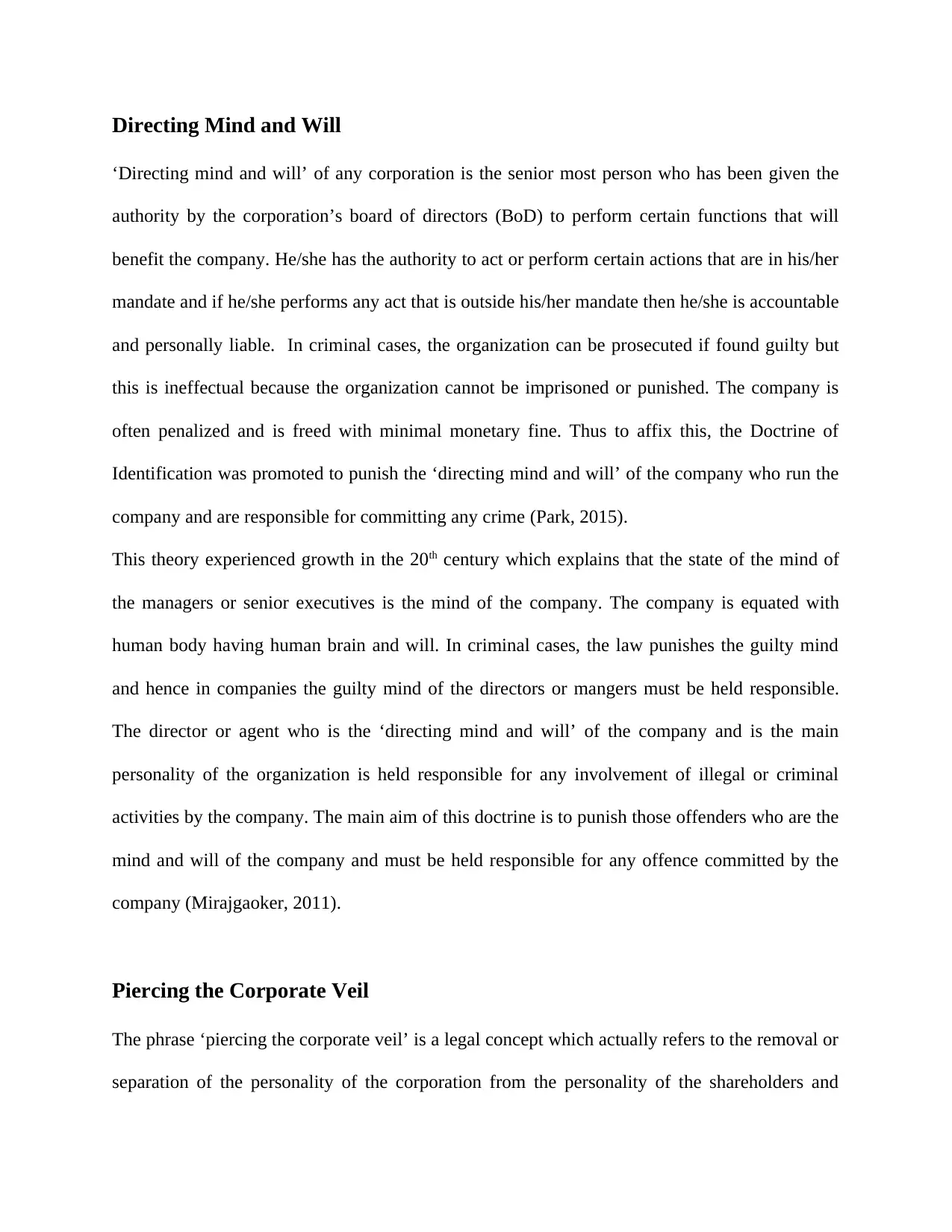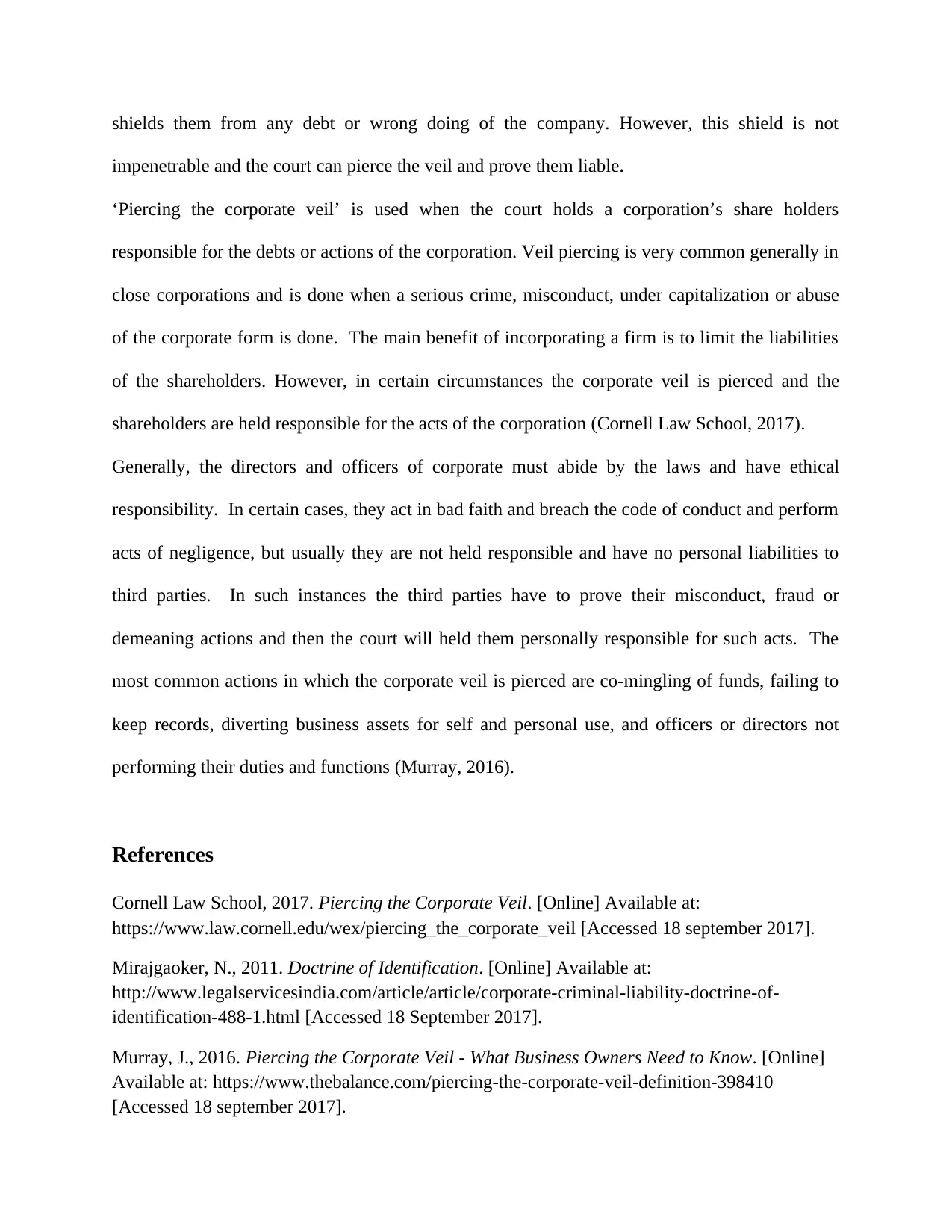Law of Business Organization Report: Directing Mind and Corporate Veil
VerifiedAdded on 2020/04/07
|5
|744
|33
Report
AI Summary
This report delves into two critical concepts within business law: the 'Directing Mind and Will' and 'Piercing the Corporate Veil.' The 'Directing Mind and Will' doctrine identifies the senior individuals within a corporation, often directors or managers, who are authorized to act on behalf of the company. The report explains that these individuals can be held personally liable for actions outside their mandate, particularly in criminal cases, where the doctrine of identification is used to assign responsibility. The second concept, 'Piercing the Corporate Veil,' addresses the legal principle that separates a corporation's identity from its shareholders, shielding them from the company's debts and wrongdoings. However, the report highlights that this protection is not absolute, and courts can 'pierce the veil' to hold shareholders liable in cases of serious misconduct, undercapitalization, or abuse of the corporate form. The report also discusses common situations where the corporate veil may be pierced, such as commingling of funds and failure to maintain proper records. Finally, the report includes references to relevant legal resources.
1 out of 5












![[object Object]](/_next/static/media/star-bottom.7253800d.svg)